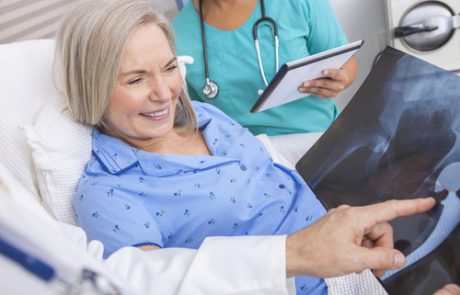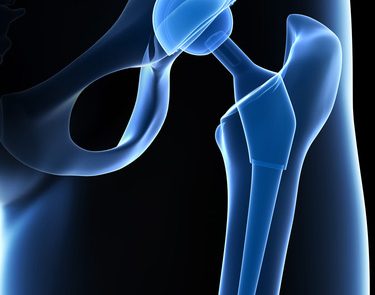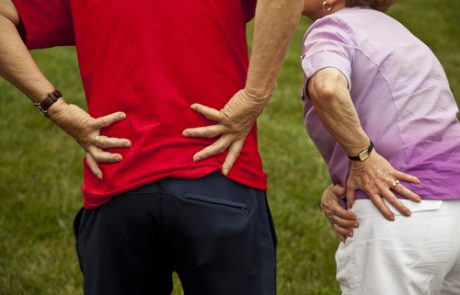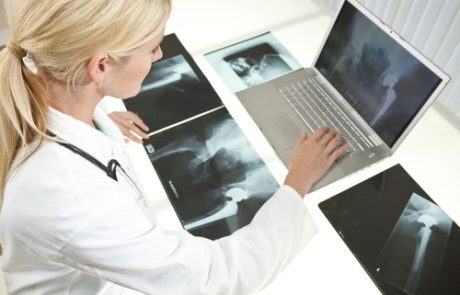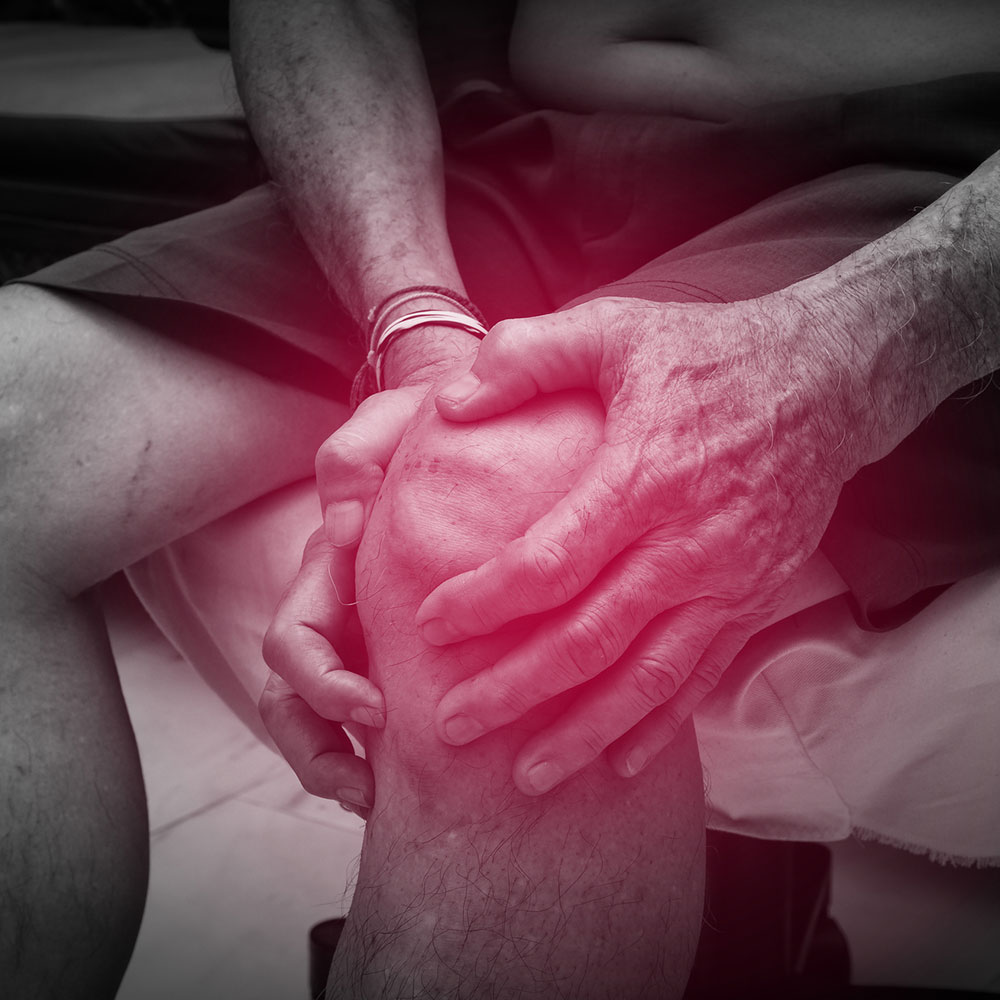
Providing the Best Treatment Options
Orthopedic Trained Specialists
At the Center of Spine and Orthopedics, our goal is to help you achieve the highest level of function as quickly as possible so that you can once again enjoy your favorite activities.
Our highly trained and experienced orthopedic and physiatry specialists use leading edge technology to diagnose your problem and then discuss your treatment options with you. Most often, we initially recommend conservative treatment since functional restoration can be achieved with non-surgical intervention (see Physiatry Treatments) in up to 80 percent of cases. In other cases, when surgery is clearly required, our experts will use the least invasive surgical procedure available to achieve your desired outcome. Some of the surgical procedures we offer are arthroscopic surgery and total joint replacements for hips, knees, and shoulders.
Highly Trained and Experienced Orthopedic and Physiatry Specialists
If your hip has been damaged by arthritis, a fracture or other conditions, even walking or getting out of a chair may be painful and difficult. Your hip may be stiff, too, making it hard to put on your shoes and socks. You may even feel uncomfortable while resting.
If medications, changes in your everyday activities and the use of walking supports do not adequately relieve your symptoms, hip replacement surgery may be an option. Hip replacement surgery is a safe and effective procedure that can relieve your pain, increase motion and help you get back to enjoying everyday activities.
Frequently Asked Questions
When is it time to consider a total hip replacement?
It may be time to consider a total hip replacement when:
- Hip pain limits your everyday activities (walking, bending or putting on your shoes).
- Hip pain persists while you are resting.
- You cannot move or lift your leg due to stiffness.
- Anti-inflammatory drugs, physical therapy, changes in everyday activities and walking supports do not relieve your symptoms.
- Your hip has been damaged by arthritis, a fracture or other conditions.
What are the benefits of total hip replacement?
Hip replacement surgery can relieve your pain, increase motion and enable you to once again enjoy everyday activities.
What is the success rate of total hip replacement surgery?
Since 1960, when the hip replacement surgery first began, joint replacement surgical techniques and technology have greatly improved, making it one of the most successful operations in medicine. According to the Agency for Healthcare Research and Quality, more than 300,000 total hip replacements are performed annually in the United States.
Who is a candidate for total hip replacement surgery?
Recommendations for surgery are based on a patient’s pain and disability, not age. Though patients who have total hip replacements are usually between ages 50 and 80, orthopedic surgeons evaluate patients individually.
What is involved in a total hip replacement?
A total hip replacement (also called total hip arthroplasty) involves removing damaged bone and replacing it with prosthetic components. The steps include:
- Removing the damaged femoral head and replacing it with a metal stem that is placed in the femur’s hollow center; the stem may be cemented or “press fitted” into the bone.
- Placing a metal or ceramic ball on the upper part of the stem to replace the damaged femoral head.
- Removing the damaged cartilage surface of the socket and replacing it with a metal socket; screws or cement may be used to hold the socket in place.
- Inserting a plastic, ceramic or metal spacer between the new ball and the socket to create a smooth gliding surface.
How long does total hip replacement surgery take?
The procedure takes a few hours, and you will likely be in the hospital for a few days.
What can I expect after surgery?
After surgery, you will feel some pain, but your surgeon and nurses will provide medication to make you as comfortable as possible. When you feel less pain, you can start moving and get your strength back more quickly.
Walking and light activity are important to your recovery. Most patients who undergo total hip replacement begin standing and walking with the help of a walking support and a physical therapist the day after surgery. In some cases, patients begin standing and walking on the day of surgery. A physical therapist will teach you specific exercises to strengthen your hip and restore movement for walking and other daily activities.
What can I expect from hip replacement surgery?
Most people who undergo hip replacement surgery experience a dramatic reduction of hip pain and a significant improvement in their ability to perform daily living activities. Other realistic activities after total hip replacement include unlimited walking, swimming, golf, driving, hiking, biking, dancing and other low-impact sports.
Over time, the material between the head and the socket of every hip replacement implant will begin to wear, even with normal activity. Excessive activity or extra weight can speed up normal wear, causing the hip replacement to loosen and become painful. Thus, high-impact activities (running, jogging, jumping or other high-impact sports) should be avoided. With appropriate activity modification, hip replacements can last for many years.
How long does recovery take?
You should be able to resume most normal light activities of daily living within three to six weeks after surgery. Some discomfort with activity and at night is common for several weeks. Exercise is a critical component of your recovery, particularly during the first few weeks after surgery. Your activity program should include:
- A graduated walking program to slowly increase your mobility
- Normal household activities (sitting, standing and climbing stairs)
- Specific daily exercises to restore movement and strengthen your hip
Arthroscopy is a common surgical procedure which enables your surgeon to view inside your knee joint using a small camera. This helps him or her diagnose and treat your knee problems.
Technical advances have led to high definition monitors and high resolution cameras. These and other improvements have made arthroscopy a very effective tool for treating knee problems. According to the American Orthopaedic Society for Sports Medicine, more than 4 million knee arthroscopies are performed worldwide each year.
What does knee arthroscopy involve?
Arthroscopy is done through small incisions. During the procedure, your orthopedic surgeon inserts the arthroscope (a small camera about the size of a pencil) into your knee joint. The arthroscope sends the image to a television monitor so that your surgeon can see your knees’ structures in great detail.
Your surgeon can use arthroscopy to repair or remove damaged tissue by inserting small surgical instruments through other incisions around your knee. Almost all arthroscopic knee surgery is done on an outpatient basis. Recovery from knee arthroscopy is much faster than recovery from traditional open knee surgery.
When is arthroscopy used?
Arthroscopy for the knee is most commonly used for:
- Removing/repairing torn meniscal cartilage
- Torn anterior cruciate ligament reconstruction
- Trimming torn pieces of articular cartilage
- Removing loose bone or cartilage fragments
- Removing inflamed synovial tissue
What can you expect after surgery?
Unless you have a ligament reconstruction, you should be able to return to most physical activities within 6 to 8 weeks. Higher impact activities may need to be avoided for a longer time. If your job involves heavy work, it may be longer before you can return to your job.
Your surgical outcome will likely be determined by knee’s degree of damage. For example, if the articular cartilage in your knee has worn away completely, then full recovery may not be possible. You may need to change your lifestyle by limiting your activities and finding low-impact exercise alternatives.
If your knee is severely damaged by arthritis or injury, it may be hard for you to perform simple activities, such as walking or climbing stairs. You may even feel pain while sitting or lying down. If nonsurgical treatments, such as medications and using walking supports, are no longer helpful, you may want to consider total knee replacement surgery. Joint replacement surgery is a safe and effective procedure to relieve pain, correct leg deformity and help you resume normal activities.
Since 1968, when knee replacement surgery was first performed, improvements in surgical materials and techniques have greatly increased its effectiveness. Today, total knee replacements are one of the most successful procedures in medicine. According to the Agency for Healthcare Research and Quality, more than 600,000 knee replacements are performed annually in the United States.
Frequently Asked Questions
When is total knee replacement recommended?
People who benefit from total knee replacement often have:
- Severe knee pain or stiffness that limits their everyday activities, including walking, climbing stairs and getting in and out of chairs. They may find it hard to walk more than a few blocks without significant pain and need to use a cane or walker.
- Moderate or severe knee pain while resting, either day or night
- Chronic knee inflammation and swelling that doesn’t improve with rest or medications
- Knee deformity (bowing in or out of the knee)
- Failure to improve with anti-inflammatory medications, cortisone injections, lubricating injections, physical therapy or other non-surgical treatment
Who is a candidate for total knee replacement surgery?
Recommendations for surgery are based on a patient’s pain and disability. Most patients who undergo total knee replacement are between ages 50 and 80, but orthopedic surgeons evaluate patients individually. Total knee replacements have been performed successfully at all ages, from the young teenager with juvenile arthritis to the elderly patient with degenerative arthritis.
What is involved in knee replacement?
A knee replacement (also called knee arthroplasty) might be more accurately be called a knee “resurfacing” because only the bones’ surface are actually replaced. The four basic steps to a knee replacement are:
- Preparing the bone – The damaged cartilage surfaces at the ends of the femur and tibia are removed along with a small amount of underlying bone.
- Positioning the metal implants – The removed cartilage and bone is replaced with metal components that recreate the surface of the joint. These metal parts may be cemented or “press-fit” into the bone.
- Resurfacing the patella – The patella (kneecap) undersurface is cut and resurfaced with a plastic button. Some surgeons do not resurface the patella, depending upon the case.
- Inserting a spacer – A medical-grade plastic spacer is inserted between the metal components to create a smooth gliding surface.
The procedure itself takes approximately one to two hours. You will most likely stay in the hospital for several days.
What outcome can you expect?
More than 90% of people who have total knee replacement surgery experience a dramatic reduction in knee pain and a significant improvement in their ability to perform daily living activities, but total knee replacement will not allow you to do more than you could do before you developed arthritis.
With normal use and activity, every knee replacement implant begins to wear in its plastic spacer. Excessive activity or weight may speed up this normal wear and may cause the knee replacement to loosen and become painful. Therefore, most surgeons advise against high-impact activities, such as running, jogging, jumping or other high-impact sports for the rest of your life. Realistic activities following total knee replacement include unlimited walking, swimming, golf, driving, light hiking, biking and other low-impact sports. With appropriate activity modification, knee replacements can last for many years.
What type of physical therapy is needed after surgery?
Most patients begin exercising their knee the day after surgery. In some cases, patients begin moving their knee on the day of surgery. A physical therapist will teach you specific exercises to strengthen your leg and restore knee movement to allow walking and other normal daily activities soon after your surgery.
To restore movement in your knee and leg, your surgeon may prescribe a continuous passive motion (CPM) exercise machine that slowly moves your knee while you are in bed. Some surgeons believe that a CPM machine decreases leg swelling by elevating your leg and improves your blood circulation by moving the muscles of your leg.
How long will recovery take?
Exercise is a critical component of home care, particularly during your first few weeks after surgery. You should be able to resume most daily living activities within 3 to 6 weeks after surgery. Your activity program should include:
- A graduated walking program to slowly increase your mobility, initially at home and later outside
- Normal household activities, such as sitting, standing and climbing stairs
- Specific exercises several times a day to restore movement and strengthen your knee.
You will likely be able to resume driving when your knee bends enough that you can enter and sit comfortably in your car and when your muscle control provides adequate reaction time for braking and acceleration. Most people resume driving approximately 4 to 6 weeks after surgery.
How is your new knee different?
Improvement of knee motion is a goal of total knee replacement, but restoration of full motion is uncommon. The motion of your knee replacement after surgery can be predicted by the range of motion you had in your knee before surgery. Most patients can expect to be able to almost fully straighten the replaced knee and to bend the knee sufficiently to climb stairs and get in and out of a car.
Most people also feel or hear some clicking of the metal and plastic with knee bending or walking. This is a normal. These differences often diminish with time, and most patients find them tolerable as compared with their pain and limited function before surgery.
Every year, thousands of conventional total shoulder replacements are successfully done in the United States for patients with shoulder arthritis. However, this type of surgery is not as beneficial for patients with large rotator cuff tears who have developed a complex type of shoulder arthritis called “cuff tear arthropathy.” For these patients, conventional total shoulder replacement may result in pain and limited motion, and reverse total shoulder replacement may be an option.
Frequently Asked Questions
What is a reverse total shoulder replacement?
A conventional shoulder replacement device mimics the shoulder’s normal anatomy: a plastic “cup” is fitted into the shoulder socket (glenoid), and a metal “ball” is attached to the top of the upper arm bone (humerus). In a reverse total shoulder replacement, the socket and metal ball are switched; the metal ball is fixed to the socket, and the plastic cup is fixed to the upper end of the humerus.
In a healthy shoulder, the “ball” of the humerus is held in the shoulder socket by several muscles and tendons, including the rotator cuff tendon. A reverse total shoulder replacement works better for people with cuff tear arthropathy because it relies on
on the deltoid muscle, instead of the rotator cuff, to power and position the arm.
Who are candidates for a reverse shoulder replacement?
Reverse total shoulder replacement may be recommended if you have:
- A completely torn rotator cuff that cannot be repaired
- Cuff tear arthropathy
- Had an unsuccessful shoulder replacement
- Severe shoulder pain and difficulty lifting your arm away from your side or overhead
- Tried rest, medications, cortisone injections, physical therapy and other ways to relieve should pain without results
What is involved in the procedure?
A shoulder replacement usually takes about two hours. Your surgeon will make an incision either on the front or the top of your shoulder. He or she will remove the damaged bone and then position the new components to restore function to your shoulder.
What should you expect after surgery?
Most patients are able to eat solid food and get out of bed the day after surgery, and you will probably be able to go home on the second or third day after surgery.
For the first several weeks after your surgery, it will be hard to reach high shelves and cupboards. When you come home from the hospital, you will need help with some daily tasks, such as dressing, bathing, cooking and laundry. Within a few weeks after surgery, you should be able to eat, dress and groom yourself.
After rehabilitation, you will likely be able to lift your arm to just above shoulder height and bend your elbow to reach the top of your head or into a cupboard. Reverse total shoulder replacement provides outstanding pain relief, and patient satisfaction is typically very high.
Torn rotator cuff surgery usually involves re-attaching the tendon to the head of humerus (upper arm bone). A partial tear, however, may need only a trimming or smoothing procedure called a debridement. A complete tear within the thickest part of the tendon is repaired by stitching the two sides back together.
When is rotator cuff surgery recommended?
Your doctor may recommend surgery for a torn rotator cuff if your pain does not improve with nonsurgical methods. Continued pain is the main indication for surgery. If you are very active and use your arms for overhead work or sports, your doctor may also suggest surgery. Other signs that surgery may be a good option include:
- Your symptoms have lasted 6 to 12 months.
- You have a large tear (more than 3 cm).
- You have significant shoulder weakness and loss of function.
- Your tear was caused by a recent, acute injury.
Many surgical repairs do not require you to stay overnight in the hospital.
What are the three most common techniques for rotator cuff repair?
The most common techniques are:
- Open Repair – A traditional open surgical incision (several centimeters long) is often required if the tear is large or complex. The surgeon makes the incision over the shoulder and detaches the shoulder muscle (deltoid) to better see and gain access to the torn tendon. During an open repair, the surgeon typically removes bone spurs from the acromion’s underside.
- All-Arthroscopic Repair – During arthroscopy, your surgeon inserts a small camera, called an arthroscope, into your shoulder joint. The camera displays pictures on a television screen, and your surgeon uses these images to guide miniature surgical instruments. Because the arthroscope and surgical instruments are thin, your surgeon can use very small incisions (cuts), rather than the larger incision needed for standard, open surgery. All-arthroscopic repair is the least invasive method to repair a torn rotator cuff and is usually an outpatient procedure.
- Mini-Open Repair – The mini-open repair uses newer technology and instruments to perform a repair through a small incision, typically 3 to 5 cm long. This technique uses arthroscopy to assess and treat damage to other joint structures. Bone spurs, for example, are often removed arthroscopically. This avoids the need to detach the deltoid muscle. Once the arthroscopic portion of the procedure is completed, the surgeon repairs the rotator cuff through the mini-open incision.
Your type of repair depends on the size of your tear, your anatomy, your tendon tissue and bone quality and your surgeon’s experience with a procedure. Each surgical repair technique has similar results in terms of pain relief, improvement in strength and function and patient satisfaction. Your surgeon’s expertise is more important in achieving satisfactory results than the type of technique.
What outcome can you expect?
The majority of patients report improved shoulder strength and less pain after rotator cuff surgery. Factors that can decrease the likelihood of a satisfactory result include:
- Poor tendon/tissue quality
- Large or massive tears
- Poor patient compliance with rehabilitation and restrictions after surgery
- Patient age (older than 65 years)
- Smoking and use of other nicotine products
- Workers’ compensation claims
Rehabilitation plays a vital role in getting you back to your daily activities. A physical therapy program will help you regain shoulder strength and motion. Most patients have a functional range of motion and adequate strength by 4 to 6 months after surgery. Expect a complete recovery to take several months. Although it is a slow process, your commitment to rehabilitation is vital to a good outcome.
Orthopedic surgeons use arthroscopy to inspect, diagnose and repair joint problems. During shoulder arthroscopy, your surgeon inserts a small camera, called an arthroscope, into your shoulder joint. The camera displays pictures on a television screen, which your surgeon uses to guide miniature surgical instruments.
Because the arthroscope and surgical instruments are thin, your surgeon can use very small incisions rather than the larger incision needed for open surgery, resulting in less pain, shorter recovery time and a faster return to favorite activities.
Shoulder arthroscopy has been performed since the 1970s. It has made diagnosis, treatment, and recovery from surgery easier and faster than was once thought possible. Improvements to shoulder arthroscopy occur every year as new instruments and techniques are developed.
Frequently Asked Questions
When is shoulder arthroscopy recommended?
Your doctor may recommend shoulder arthroscopy if you have a painful condition that does not respond to nonsurgical treatment, such as rest, physical therapy and medications or injections that can reduce inflammation. Inflammation is one of your body’s normal reactions to injury or disease. In an injured or diseased shoulder joint, inflammation causes swelling, pain and stiffness.
Injury, overuse, and age-related “wear and tear” are responsible for most shoulder problems. Shoulder arthroscopy may relieve painful symptoms of many problems that damage the rotator cuff tendons, labrum, articular cartilage and other surrounding soft tissues.
What are the most common arthroscopic procedures?
- Rotator cuff repair
- Bone spur removal
- Labrum removal or repair
- Ligament repair
- Inflamed tissue or loose cartilage removal
- Recurrent shoulder dislocation repair
Most arthroscopic procedures take less than an hour; however, the length of your surgery will depend on what your surgeon finds and what repairs are required. If you are generally healthy, your arthroscopy will most likely be performed without an overnight hospital stay.
What does the procedure involve?
First, your surgeon will inject fluid into the shoulder to inflate the joint, making it easier to see all your shoulder’s structures through the arthroscope. Then your surgeon will make a small puncture in your shoulder (about the size of a buttonhole) for the arthroscope. Fluid flows through the arthroscope to keep the view clear and control any bleeding. Images from the arthroscope are projected on the video screen, showing your surgeon the inside of your shoulder and any damage. Once the problem is clearly identified, your surgeon will insert other small instruments through separate incisions to repair it.
What can you expect after surgery?
Although recovery from arthroscopy is often faster than recovery from open surgery, it may still take weeks for your shoulder joint to completely recover. An exercise program will help you regain shoulder strength and motion. Your surgeon will develop a rehabilitation plan based on the surgical procedures you required.
If you have had a more complicated surgical repair, your surgeon may recommend a physical therapist to supervise your exercise program. It is important that you make a strong effort at rehabilitation for your surgery to succeed. Although it can be a slow process, following your surgeon’s guidelines and rehabilitation plan is vital to a successful outcome.
Although shoulder joint replacement is less common than knee or hip replacement, it is just as successful in relieving joint pain. Shoulder replacement surgery was first performed in the United States in the 1950s to treat severe shoulder fractures. Over the years, shoulder joint replacement has come to be used for many other painful conditions of the shoulder, such as arthritis. Today, about 53,000 people in the United States have shoulder replacement surgery each year, according to the Agency for Healthcare Research and Quality.
Frequently Asked Questions
When is it time to consider shoulder joint replacement?
If activity changes, physical therapy, medications and other non-surgical treatment are no longer helpful for relieving pain, you may want to consider shoulder joint replacement surgery. People who benefit from surgery often have:
- Severe shoulder pain that interferes with everyday activities, such as reaching into a cabinet, dressing, toileting and washing.
- Moderate to severe pain while resting. This pain may be severe enough to prevent a good night’s sleep.
- Loss of shoulder motion and/or shoulder weakness
- Failure to substantially improve with other treatments, such as anti-inflammatory medications, cortisone injections, or physical therapy.
Are there different types of total shoulder replacements?
Yes, there are different types of shoulder replacements. Shoulder replacement surgery is highly technical and should be performed by a surgical team with experience in this procedure. Your surgeon will discuss which type of replacement would best you’re your needs.
What are the different types?
The typical total shoulder replacement involves replacing the arthritic joint surfaces with a highly polished metal ball attached to a stem and a plastic socket. Patients with bone-on-bone osteoarthritis and intact rotator cuff tendons are generally good candidates for conventional total shoulder replacement. Other types of shoulder replacements include:
- Stemmed hemiarthroplasty – Depending on your shoulder’s condition, your surgeon may replace only the ball, a procedure called a hemiarthroplasty. In a traditional hemiarthroplasty, the head of the humerus is replaced with a metal ball and stem, similar to the component used in a total shoulder replacement. Studies show that patients with osteoarthritis get better pain relief from total shoulder arthroplasty than from hemiarthroplasty.
- Resurfacing hemiarthroplasty – Resurfacing hemiarthroplasty involves replacing the humeral head joint surface with a cap-like prosthesis without a stem. With its bone preserving advantage, it offers those with shoulder arthritis an alternative to the standard stemmed shoulder replacement. For patients who are young or very active, resurfacing hemiarthroplasty avoids the risks of component wear and loosening that may occur with conventional total shoulder replacements in this population.
- Reverse Total Shoulder Replacement – Reverse total shoulder replacement is used for people who have 1) Completely torn rotator cuffs with severe arm weakness; 2) Cuff tear arthropathy; or 3) Have had a failed shoulder replacement. In reverse total shoulder replacement, the socket and metal ball are switched. This allows the patient to use the deltoid muscle instead of the torn rotator cuff to lift the arm.
How long does a shoulder replacement procedure take?
The procedure usually takes about 2 hours.
What can you expect after surgery?
For the first several weeks after your surgery, it will be hard to reach high shelves and cupboards. When you come home from the hospital, you will need help with daily tasks like dressing, bathing, cooking, and laundry for a few weeks. Most patients are able to perform simple activities such as eating, dressing and grooming within 2 weeks after surgery. Driving a car is not allowed for 2 to 4 weeks after surgery.
What are some do’s and don’ts after surgery?
Your surgery’s success largely depends on how well you follow your orthopedic surgeon’s instructions during the first few weeks after surgery. Some common do’s and don’ts when you get home are:
- Don’t use your arm to push yourself up in bed or from a chair because this requires forceful contraction of muscles.
- Follow the home exercises prescribed for you. You may need to do them 2 to 3 times a day for a month or more.
- Don’t overdo it! If your shoulder pain was severe before the surgery, the experience of pain-free motion may lull you into thinking that you can do more than is prescribed. Early overuse of the shoulder may result in severe limitations in motion.
- Don’t lift anything heavier than a glass of water for the first 2 to 4 weeks after surgery.
- Ask for assistance. Your physician may be able to recommend an agency or facility if you do not have home support.
- Don’t participate in contact sports or do any repetitive heavy lifting after your shoulder replacement.
- Avoid placing your arm in any extreme position, such as straight out to the side or behind your body for the first 6 weeks after surgery.
Many thousands of patients enjoy improved quality of life after shoulder joint replacement surgery, including less pain, improved motion and strength and better function. Doing the right things and avoiding the wrong things will help ensure you get the result you want!

